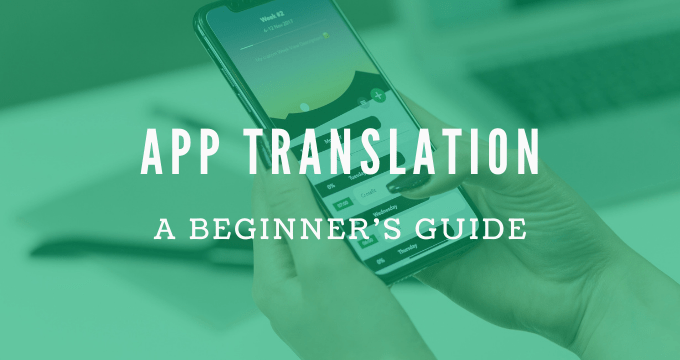There are currently 2.3 billion smartphone users in the world, the majority of which are from non-English speaking countries. According to the latest research from Statista Research Department, China surpasses the USA as the country with the most app downloads.
This presents a tremendous opportunity for companies looking to compete in the global market and gain the attention of worldwide audiences.
Translation vs Localization
When it comes to creating an app that supports multiple languages, both translation and localization have a role to play.
Mobile app translation and mobile app localization are not the same. Translation converts the written words into your target language by copying the language source word for word. Localization, on the other hand, employs various techniques to ensure the localized content retains the full meaning of the original text.
At the Language Department, we employ the expertise of a skilled localizer to adapt your content to the culture of your target demographic. To help you get a solid grasp of the localization process, let’s discuss the steps involved.
1. Setting the strategy
An international company looking to take their product overseas should focus on filling any gaps where there is demand. For instance, a navigation app would build greater momentum in larger, busier cities such as China, India or Japan.
Similarly, they should narrow down which local markets offer more opportunities and are the most profitable to target. A company based in California could localize its app to appeal to Spanish speakers within these regions.
While user research is invaluable in this case, so is the judgment of your app localization service provider. A highly competent translator can identify any cultural differences in your target market. This will guide you to create an effective translation strategy that speaks to these communities.
2. Optimizing the user experience (UX)
The term user experience refers to the customer’s experience when using your application. Users will not think twice about abandoning an app that doesn’t work well or causes frustration. Thus, building an interactive design that’s easy to use goes a long way towards ensuring customer satisfaction.
Language is also an integral part of this process. Using simple words and phrases familiar to the user makes your app more relevant and easier to understand.
However, one of the biggest challenges you are likely to face is word length. As very few languages contain the same amount of words, the translated content is unlikely to fit the original design. For this reason, a UX professional should support localization early in the design process. They will help ensure the right messaging, without impacting the design’s usability.
3. Customizing the code
When translating a document into multiple languages, it is preferable to customize the code before localizing the copy. This includes UI (user interface) text and text string as well as any graphical elements or animations implemented into visual design.
A fully integrated platform should accommodate translated materials as well as any other languages you may introduce in the future.
4. Localizing the content
It is only natural for app developers to work in their native languages. So when localizing your mobile app, you may need to think outside the box. Luckily professional language services exist to help you navigate this tricky area of translation. From titles and descriptions to images and videos, a translator will skillfully translate the whole app into the target language.
Another area to take into consideration is keywords. Keywords increase visibility in search engines, which in turn, increases app downloads. But to create an effective keyword strategy, you need to think like your customers. Fortunately, at Language Department, we have years of experience working in Multilingual SEO Services and will help you make an educated decision.
To find out more, refer to our article “Multilingual SEO – PT 2: How To Maximize Your ROI.”
For better, more accurate results, a native speaker or a translator should also review your app to evaluate its linguistic quality. They may take it through two or three rounds of testing until they are 100% happy with the final product.If you require the assistance of an app translation service, contact us today to talk with one of our strategists. Our team will go above and beyond to help you gain worldwide prestige.




